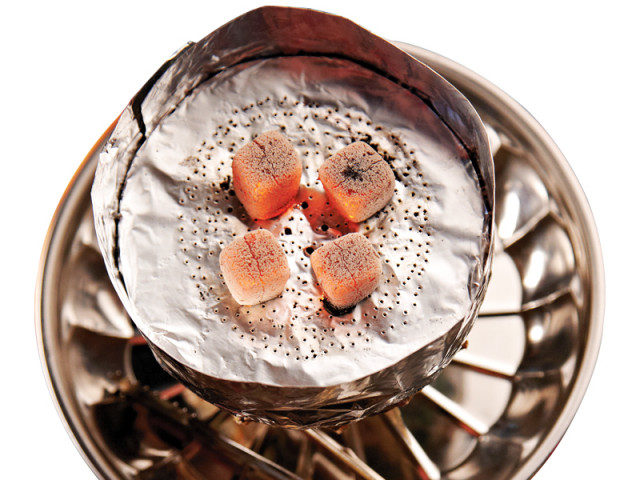Sheesha: Smoke and mirrors
Smoking sheesha is more harmful than cigarettes, than why do people still do it?

Sheesha: Smoke and mirrors
Sheesha — the modern twist on hookah — found at a variety of restaurants and cafes nowadays, consists of a base, a pipe extending from the base, a bowl, a hose and a mouth piece. Flavoured tobacco is added to a bowl which is placed on top of the pipe. The bowl is then covered with aluminium foil that is punctured with small holes and red hot charcoal pieces are placed on top to heat the tobacco. Since smoke is inhaled through water in a sheesha, it is considered less damaging to the body than cigarettes. However, sheesha contains the same ingredients that cigarettes do, such as tar, carbon monoxide, heavy metals, and other toxic chemicals, which are carcinogenic.
Huff, puff and blow you away
• Volume of smoke inhaled in an hour-long sheesha session is estimated to be the equivalent of smoking 100-200 cigarettes. The amount of smoke inhaled during a typical hookah session is about 90,000 millilitres (ml). Meanwhile, 500–600 ml is inhaled when smoking a cigarette.
• Factors that could potentially increase risk to sheesha smokers are the amount of puffs they take, the depth of inhalation, the length of the session and duration of smoking.
As bad as smoking, if not worse
Hookah smokers may be at risk for some of the same diseases as cigarette smokers which include:
• Coronary artery diseases (angina/heart attack). Symptoms include blood clotting and high blood pressure.
• Cancer of the lungs, mouth, larynx, esophagus, cervix, and bladder — this is because tobacco juices irritate the mouth and then they are swallowed and come into contact with other organs.
• It does not allow bodily wounds to heal quickly and well.
• Chronic lung disease
• Addiction
• Asthma — the heavy volume of smoke causes chemical irritation to the lungs leading to allergy-induced asthma.
• Premature labour in women and miscarriages.
• Male infertility
• Use of common pipes, which may or may not be cleaned regularly, can cause a number of infections and diseases such as tuberculosis.
• Charcoal used to heat the tobacco produces high levels of carbon monoxide.
• Second-hand smoke can cause all these above ffects to people around you and lead to upper-respiratory tract infections, pneumonia, ear infections and can trigger asthma.
What to do?
• Increase awareness about its harmful effects on health through public messages, flyers, advertisements and health campaigns.
• Health education should be part of the academic syllabus at school.
• Parents should keep an eye on their children’s activities.
• There should be certain rules and regulations observed at cafes and restaurants serving sheesha. For e.g observing age limits and not allowing customers to smoke in small, stuffy indoor spaces.
Saadia Khan is a pediatric resident from Multan. She tweets @drkhanchc
Published in The Express Tribune, Sunday Magazine, November 9th, 2014.



















COMMENTS
Comments are moderated and generally will be posted if they are on-topic and not abusive.
For more information, please see our Comments FAQ